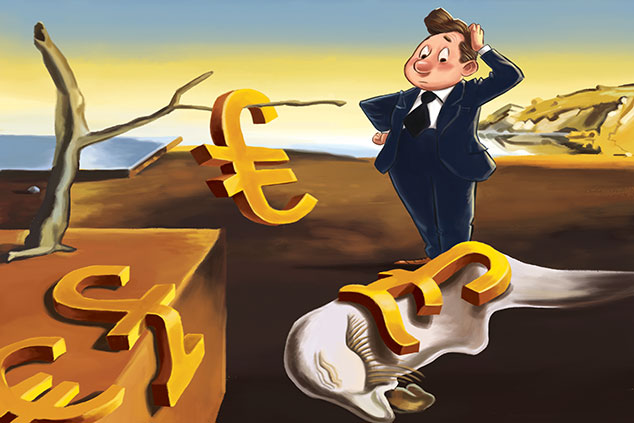
Investors are paying good money to be allowed to lend money to governments across the world. What on earth is going on, and what does it mean for your money? John Stepek reports.
What if your bank was to offer you a ten-year fixed-rate mortgage on which you had to pay absolutely no interest? Better still, at the end of the ten-year term, you’d find that you had repaid less than you actually borrowed in the first place. Sounds like a dream, doesn’t it? But if you live in Denmark, it’s a reality. Jyske Bank, the third-largest bank in Denmark, is now offering a ten-year deal at a rate of -0.5% a year.
Meanwhile, Nordea Bank is offering 20-year deals at 0% (ie, interest free), while borrowers can already get 30-year deals at 0.5%. Of course, the flipside is that savers get 0% interest, or in some cases are charged for leaving their money in the bank (Swiss bank UBS is planning to introduce a 0.6% annual charge on deposits above €500,000). Welcome to the whacky world of negative interest rates.
Across the globe, around $15trn-worth of government debt now trades on negative yields – in other words, debtors get paid to borrow, rather than the other way around. Negative rates have been most obvious in Japan and the eurozone. Unlike in the UK and the US, central banks in these countries have set negative base rates. The European Central Bank rate is -0.4%, while in Japan the rate is -0.1%. In Denmark, Switzerland and Sweden, rates are even lower.
Yet even in the US and the UK, bond yields are close to, or at, fresh record lows and Joachim Fels of US bond giant PIMCO recently argued that investors should be prepared to see negative rates in the US too, should the Fed be forced to restart quantitative easing. Are bonds in a bubble? So what’s going on here? The most straightforward answer is that this is nothing more than a bubble. An unusual bubble, to be sure – it’s strange that an asset as dull and as sensible as a government bond should be the subject of market mania – but a bubble nonetheless.
Subscribers can read it in the digital edition or app